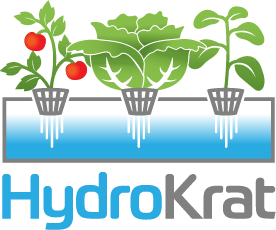Kratky containers refer to a passive hydroponic system developed by Dr. Bernard Kratky, a plant scientist at the University of Hawaii. This method allows plants to grow without the need for electricity, pumps, or moving parts. Here’s how Kratky containers work:
- Container: Plants are grown in containers filled with a nutrient solution. The container is typically made of plastic or another non-porous material and should be large enough to support the plant’s root system.
- Nutrient solution: A nutrient solution, consisting of water and essential plant nutrients, is added to the container. The solution provides all the necessary nutrients for plant growth.
- Growing medium: Unlike traditional hydroponic systems, Kratky containers use a static nutrient solution without any growing medium. Instead, the plant’s roots are suspended directly in the nutrient solution, allowing them to absorb water and nutrients as needed.
- Air space: A crucial component of the Kratky method is the presence of an air space between the bottom of the container and the surface of the nutrient solution. This air space provides oxygen to the plant roots, preventing them from suffocating.
- Plant support: The plant’s roots grow down into the nutrient solution, anchoring the plant in place. As the plant grows, it draws up water and nutrients from the solution through capillary action.
- Water level: Initially, the nutrient solution is filled to a level just below the bottom of the net pot or growing container. As the plant consumes water and nutrients, the solution level decreases over time. The container is not refilled during the growing cycle, allowing the plant to adapt to changing conditions.
Kratky containers are particularly well-suited for growing leafy greens and herbs, such as lettuce, spinach, basil, and cilantro. This method is simple, low-cost, and requires minimal maintenance, making it accessible to beginner hydroponic gardeners. However, it may not be suitable for all plant types or large-scale production.

Recent Comments